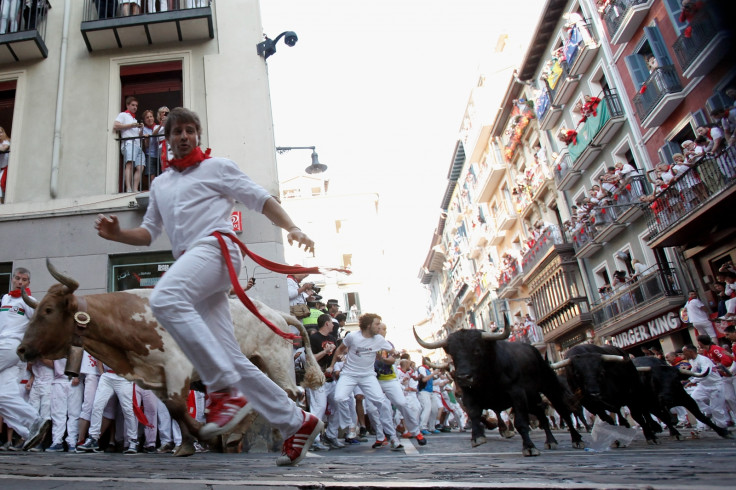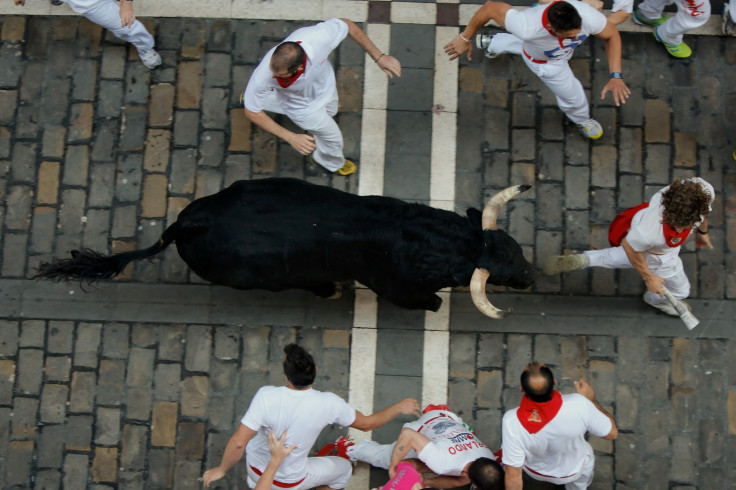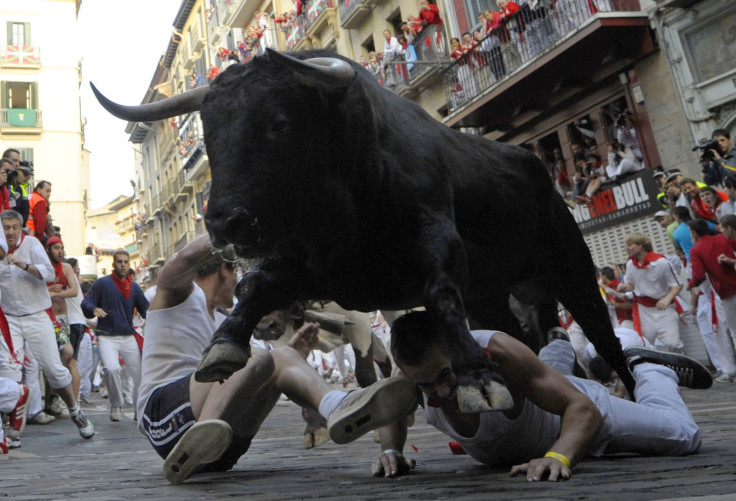Running of the bulls: The history and controversy of Pamplona's famous tradition

For centuries now, every July, the streets of Pamplona in Northern Spain have been filled with the sound of charging bulls. What began as part of a religious festival to honour St Fermin, the patron saint of the small city in Navarra, has turned into one of the world's most controversial traditions. Today the running of the bulls, or encierro, attracts tens of thousands of visitors every year.
The festival of San Fermin takes place annually from 6 to 14 July. The running of the bulls, which starts on 7 July, originated from the need to transport the bulls from the offsite livestock enclosures to the bullfighting ring. It is believed the practice dates back to the 14<sup>th century, but it was first made famous outside of Spain by Ernest Hemingway's 1926 novel The Sun Also Rises.
Thousands from around the world race through Pamplona ahead of the charging bulls, while spectators look on from balconies or in buildings along the route. The run begins with participants singing a benediction to St Fermin three times in Spanish and Basque. Most wear the traditional clothing of a white shirt and trousers with a red waistband and scarf.

At 8am, a rocket is set off to alert runners that the gate to the bulls' enclosure is open, before a second rocket signals the bulls have been released. The run generally takes minutes and goes through four streets of the old part of the city before entering the bullring.
Dozens of runners are injured every year during the event, the majority from falls – but some are gored, which is potentially lethal. Since records began in 1924, 15 runners have died.
The running of the bulls remains a popular tourist attraction for the city of Pamplona, but its popularity is waning and it has attracted fierce criticism from animal rights activists. According to Peta, electric prods and sticks are used to torment animals ahead of the run. They may also be debilitated by tranquilisers. Pursued by hundreds, the bulls slip and skid along the cobbled roads.
"Pamplona's streets will once again be stained with blood from some of the 50 bulls who will stumble and fall, before all go to their deaths in the bullring," said Sascha Camilli, a spokesperson for the organisation.

"These animals will be stampeded after being hit with electric prods and sharp sticks and suffering other physical torments, including being given laxatives to weaken them. They will be goaded by revellers, many drunk, who give the animals' plight no thought."
The tradition has begun to face challenges, from both animal rights groups and the general public. The economic downturn has seen the running of the bulls experience a drop in popularity and, in June, Pamplona's new mayor Joseba Asiron raised the prospect of a public consultation on the tradition.
In the bullring, activists say, the cruelty continues. "More than a dozen people will attack each bull, taunting, beating and jabbing him with daggers for approximately 15 minutes – until the matadors take over and stab the exhausted animal with a sword," Camilli said.
"Some bulls drown in their own blood when the matador's aim is poor and the sword pierces the lungs instead of the heart. No decent person participates in the cruelty of the running of the bulls or the bloody spectacle of the bullfights that take place afterwards."
While the running of the bulls will continue for the immediate future, only time will tell if the historic event will eventually be abandoned.
© Copyright IBTimes 2025. All rights reserved.






















